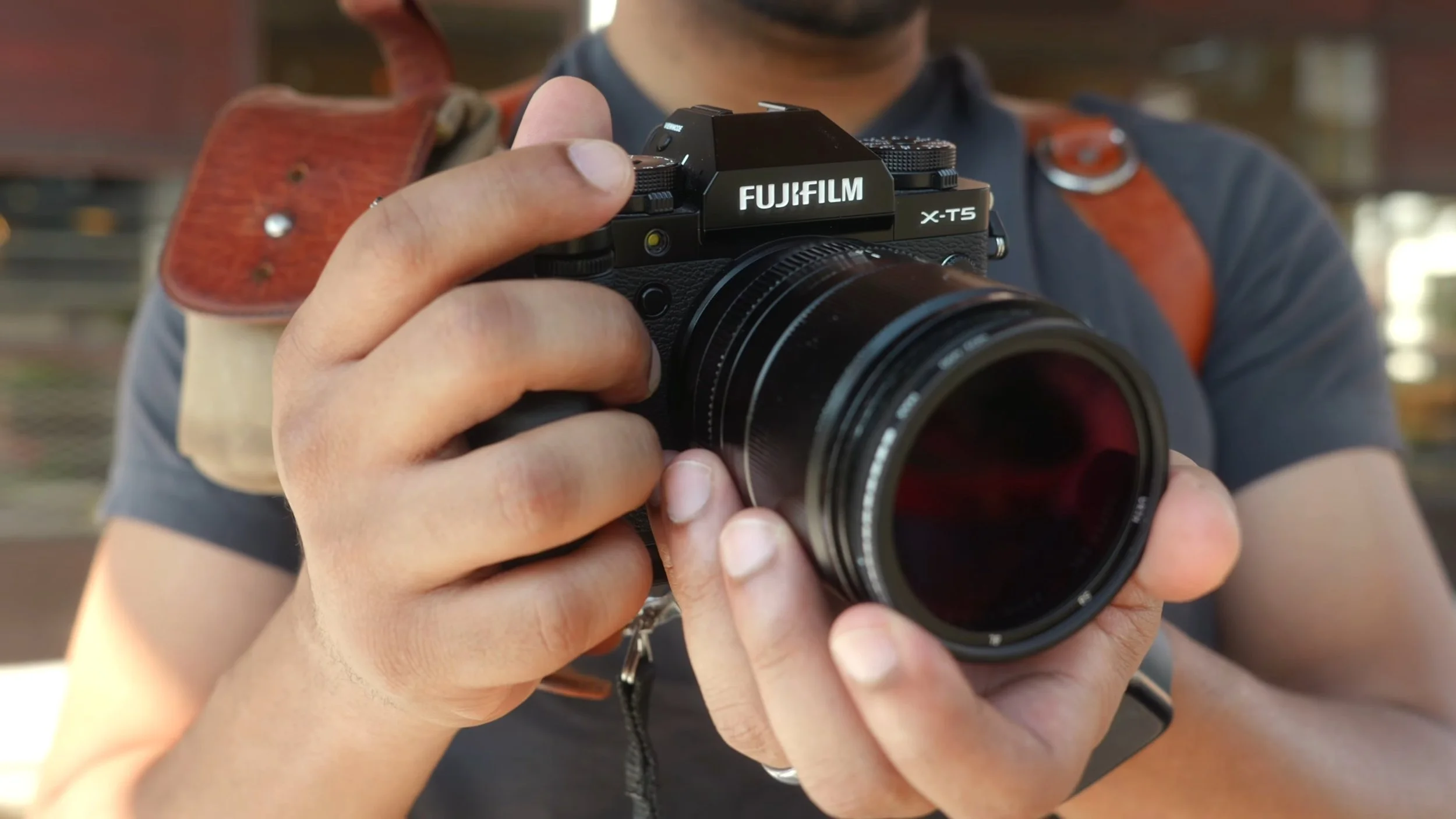Fujifilm GFX vs X-T Series: Which Camera Makes More Sense for Weddings?
Choosing the right camera system for weddings isn’t just about specs on a sheet. It’s about what your body can handle for 8-10 hours, how fast you can react to once-in-a-lifetime moments, and whether the gear you buy actually makes sense for your business.
I’ve been shooting Fujifilm exclusively for about eight years now, and it’s really become my bread and butter. My journey started with the X-T2, moved through the X-T3 (hands down my favorite) and X-T4 (not a fan), and now I’m on the X-T5 — so I know this system inside and out. More recently, I added the GFX to my kit, and it didn’t take long to realize each shines in its own way. The GFX delivers those jaw-dropping, ultra-crisp files that make you stop mid-edit, while the X-T series brings the speed, lightness, and reliability that save your back on back-to-back wedding weekends.
This guide breaks down the core differences in a wedding context, so you can decide which setup fits your shooting style and workflow best.
Using the Fujifilm X-T5 Camera for Weddings
Understanding the Two Systems
Think of the X-T series as Fujifilm’s fast, lightweight workhorse. Compact bodies, versatile lenses, and files that edit quickly without crushing your storage.
The GFX system is Fujifilm’s medium format beast. Bigger sensors, massive files, and image quality that makes you stop mid-edit and say, “Wow.” But it comes at the cost of weight, speed, and price.
Both can handle weddings, the question is which one makes more sense for you.
The Key Factors Wedding Photographers Should Consider
1. Weight and Comfort
The first thing that hit me when I picked up the X-T5 again (after it had been collecting dust on the shelf for a while) was how much lighter it felt compared to my GFX setup. Wedding days are not sprints — they’re marathons — and even a small difference in weight adds up over eight or ten hours. With the X-T bodies and smaller primes, I felt significantly fresher by the end of the night. My back wasn’t screaming, and I could move around the dance floor without feeling like I had a backpack full of bricks.
The GFX, on the other hand, delivers incredible files but the bodies and lenses are heavy, and by heavy, I mean “your knees will let you know about it” heavy. If you’re shooting back-to-back weekends, that comfort factor makes a huge difference.
2. Speed and Performance
Weddings don’t wait for you to catch up. The first kiss, the bouquet toss, grandma suddenly pulling someone onto the dance floor, those moments happen fast. The X-T5 is quick to focus, responsive, and honestly feels effortless when you’re trying to capture fleeting action. The GFX has improved a lot for a medium format system, and it’s definitely usable, but it rewards a slower, more intentional approach. It’s great when you have time to anticipate and frame, but it won’t feel as snappy when you need to react instantly.
That doesn’t mean the GFX can’t keep up. I’ve shot entire weddings with only my GFX 100s (you can check out the full wedding video on my channel here). But the X-T lets me relax knowing I can trust it to nail focus on unpredictable moments.





3. Image Quality and Crop Flexibility
This is where the GFX spoils you. Those 102MP files are just different. They’re sharp, they’re detailed, and the crop flexibility feels endless. I’ll often shoot a bit wider knowing I can punch in later and still deliver a clean, high-res image. The X-T5 at 40MP is no slouch either — couples aren’t pixel-peeping their wedding photos at 500% zoom, and for albums, prints, and social sharing, it looks fantastic. But I can’t lie: when I compare the two side by side, the GFX files have a look and depth that’s tough to ignore. Still, in terms of what clients actually see and care about, both deliver beautiful results.
4. Price and Business Sense
Here’s where things get real. The X-T system is significantly cheaper to build a full kit with dual bodies, backups, and a versatile set of lenses. It’s the smart choice if you want to invest in your business without sinking all your money into gear. The GFX, on the other hand, is expensive. Bodies and lenses quickly add up, and while the image quality is amazing, you have to ask whether that investment makes sense for your return. I’ve been guilty of gear acquisition syndrome more than once — “that’s what I told my wife at least” — but at the end of the day, gear should help you grow your business, not put it in a chokehold.
Wedding day captured using the Fujifilm X-T3 & X-T4
When Each System Makes Sense
Go with X-T if:
You want speed, portability, and comfort.
You’re shooting back-to-back weddings and need efficiency.
You value financial flexibility for your business.
Go with GFX if:
You crave the look and flexibility of medium format.
You want files with unmatched detail and depth.
You’re ready for the extra weight and workflow it demands.
Be Honest About Your Workflow
At the end of the day, no couple cares if their photos were shot at 40MP or 102MP. They care about moments, emotions, and storytelling.
The X-T series is built for long, fast wedding days where speed and reliability matter most, while the GFX delivers those jaw-dropping files that make you pause mid-edit and just stare. Both can handle the job, it’s really about which one fits the way you like to work.
If you’re curious about my thoughts on the other GFX cameras in my kit, check out these posts:




